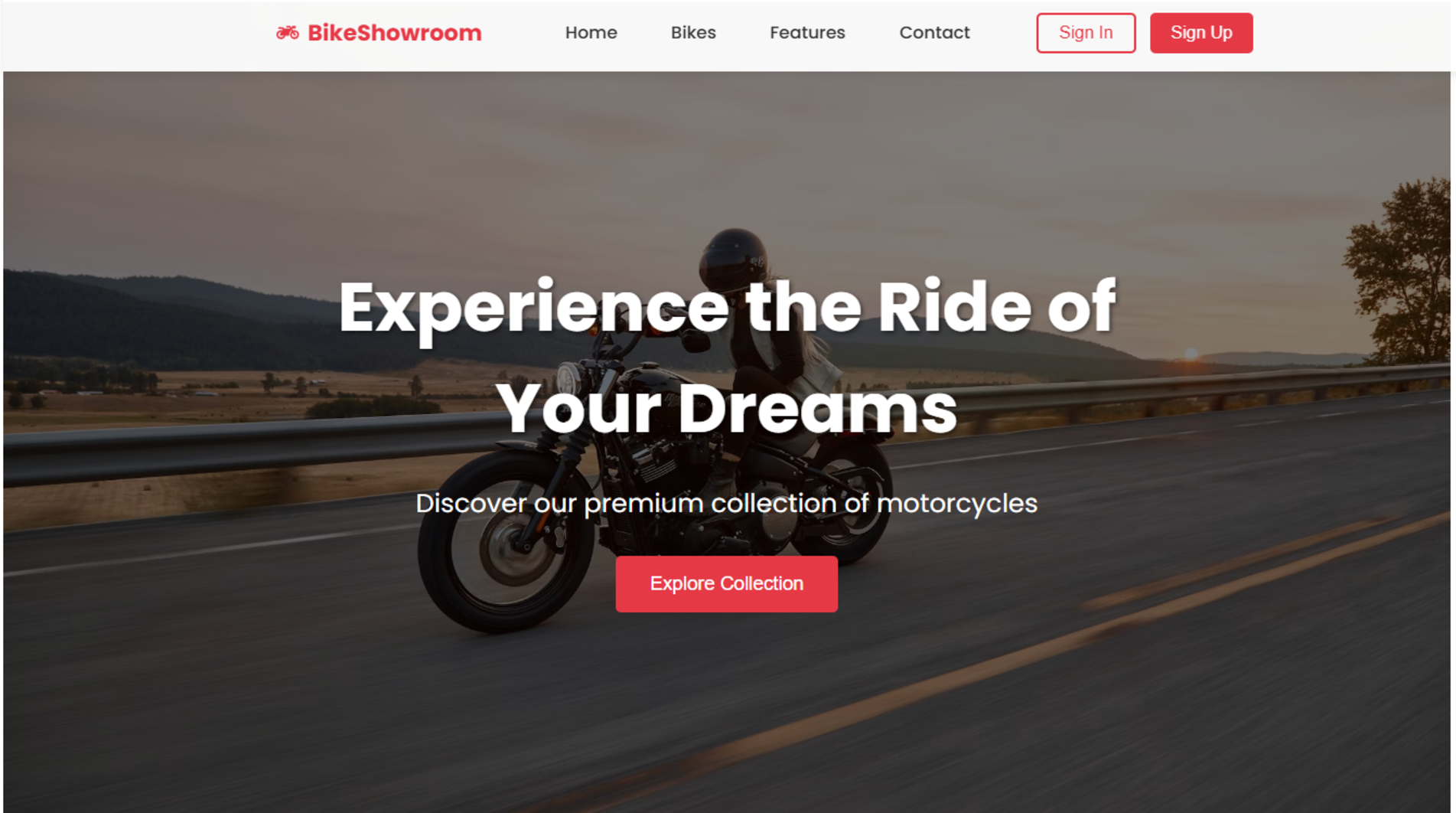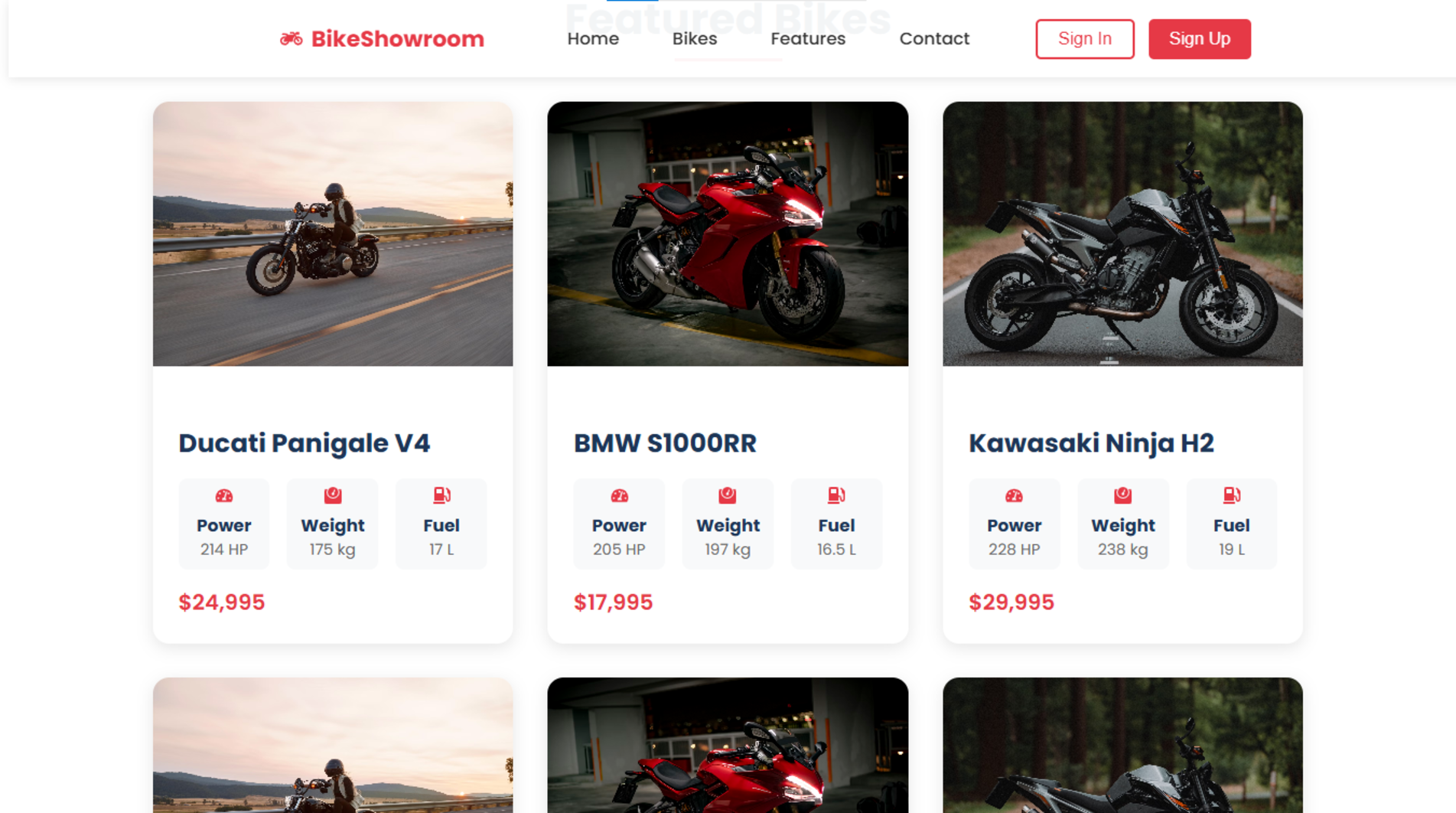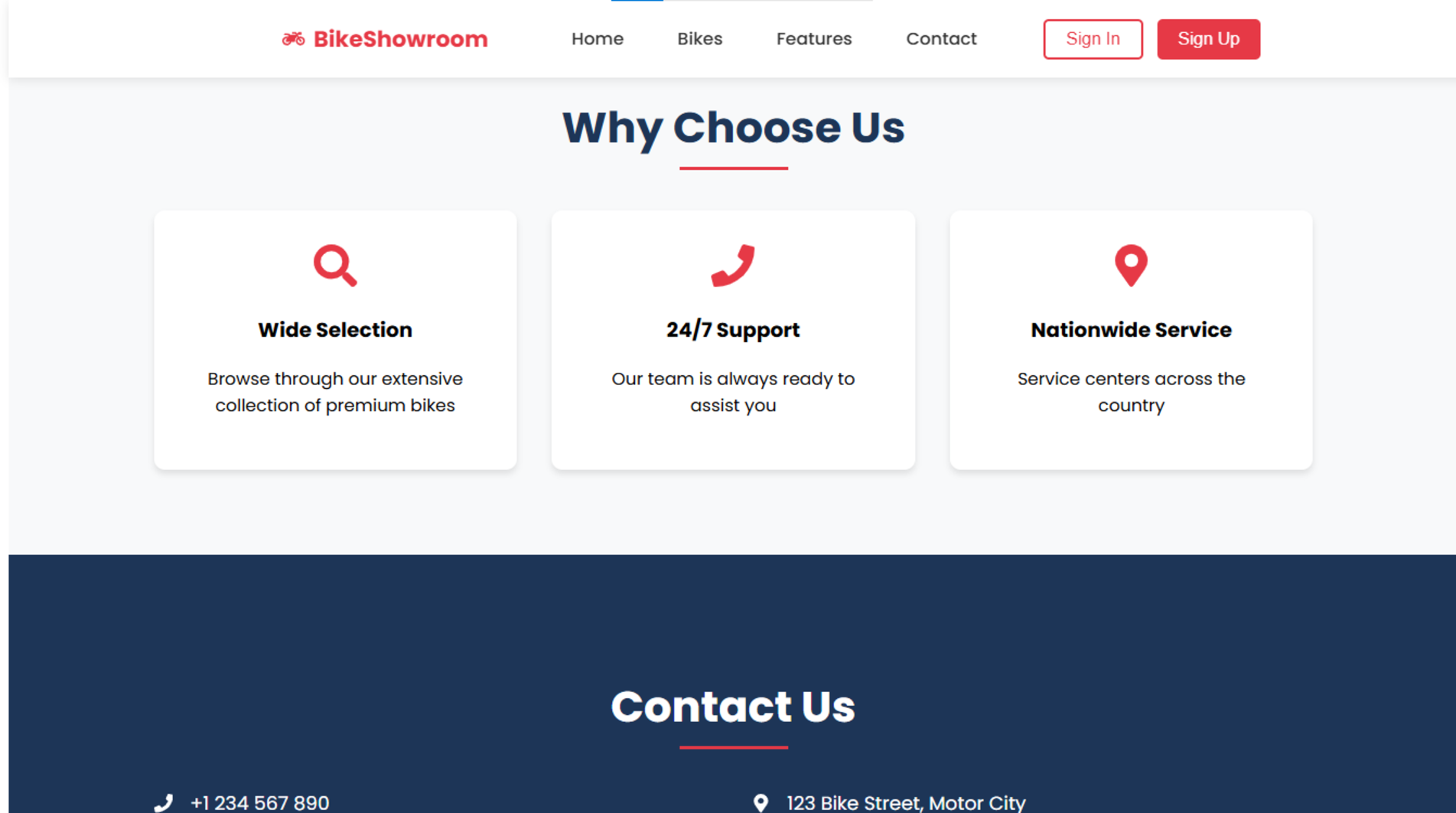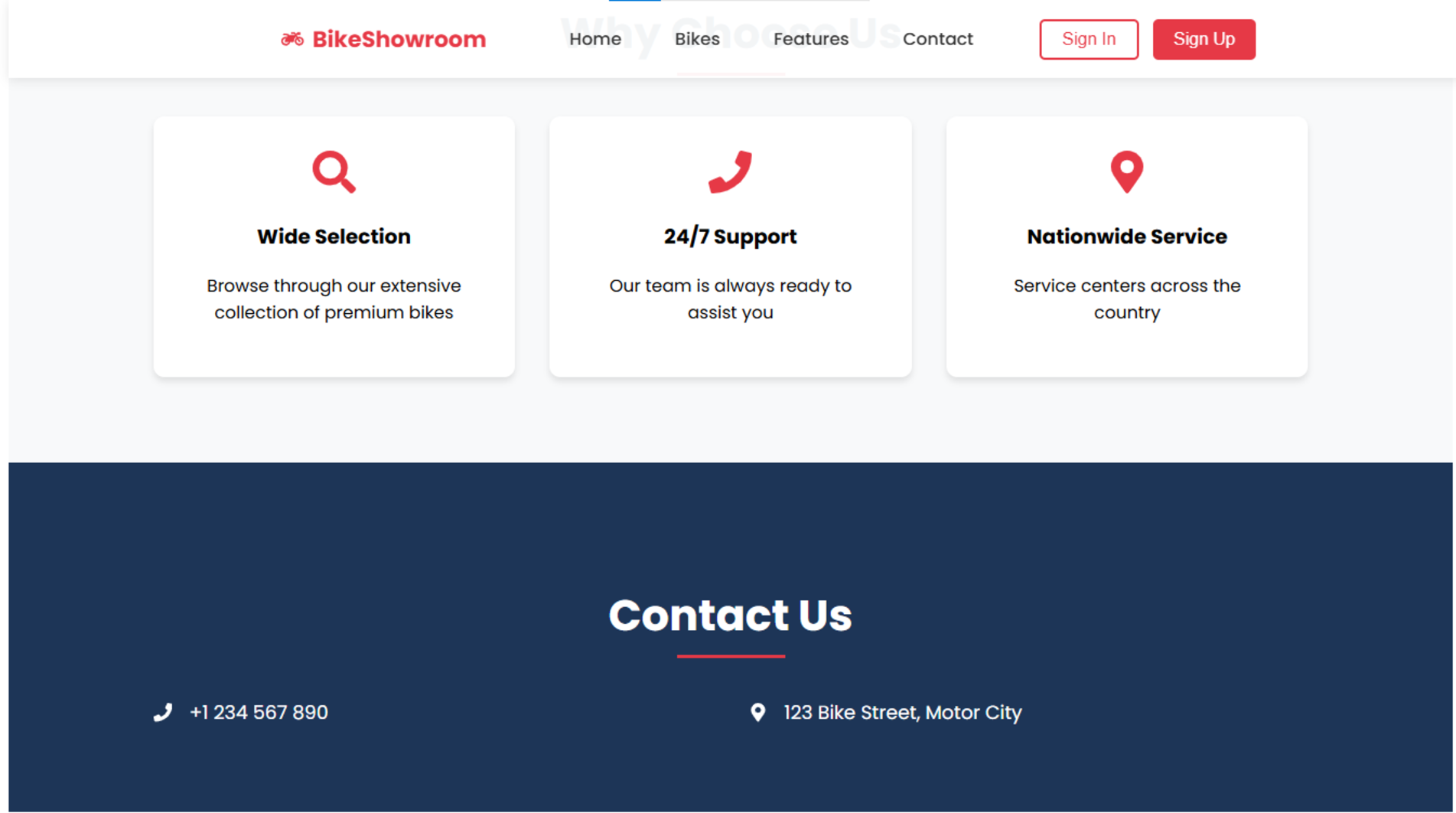Project information
- Category: React Project
- Project date: 11 February, 2025
- Project URL: none
- Project Name: Bike Showroom Landing Page
- Technologies Use: React JS
Bike Showroom Landing Page: A React Project
Overview:
In the era of online presence and digital branding, businesses need visually appealing and responsive landing pages to engage customers. This project — a Bike Showroom Landing Page — is crafted using React to showcase modern motorcycles in a sleek, intuitive, and performance-oriented layout. The landing page is tailored for a high-end bike dealership and includes dynamic UI elements to enhance user experience.Introduction:
The "Bike Showroom Landing Page" is a React-based frontend web project designed to provide a visually engaging and user-centric introduction to a motorcycle dealership. With modern design principles and a component-based architecture, this project delivers a responsive and seamless user interface, reflecting real-world design aesthetics and interaction patterns.Technical Details:
Frontend Framework: React.js for modular UI development and state management.Styling: CSS3 and optionally Tailwind CSS or Bootstrap for layout, responsiveness, and visual appeal.
Libraries Used: React Icons for visual assets, Swiper.js for sliders, and AOS for scroll animations.
Structure: Reusable functional components such as Hero, Bikes Showcase, About Us, and Contact Form.




